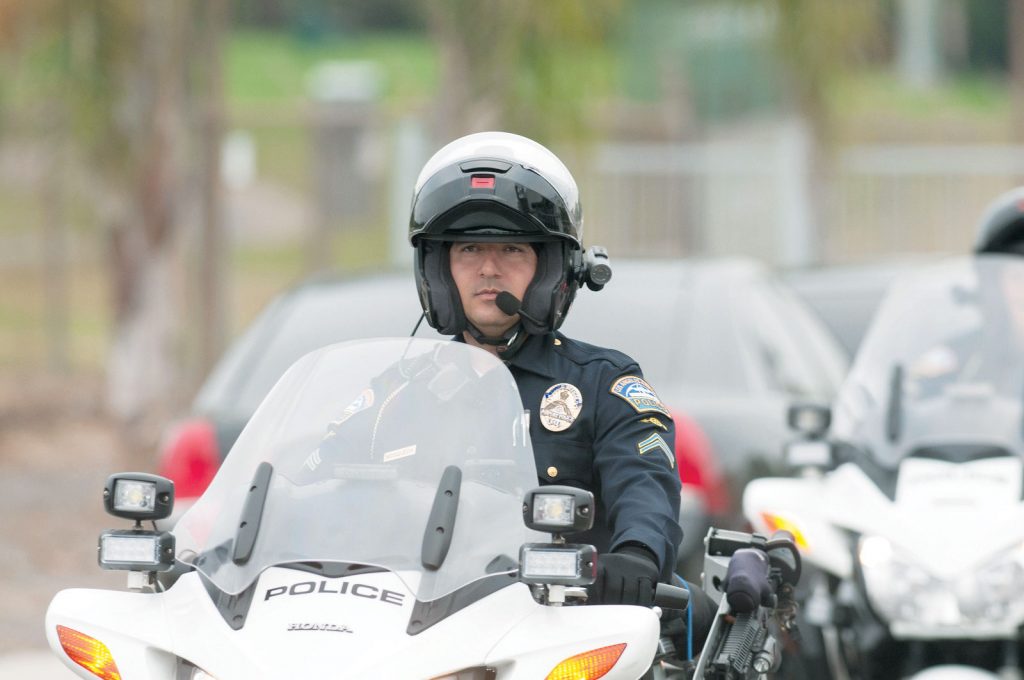
New data released by the U.S. Department of Justice’s Bureau of Justice Statistics (BJS) shows a significant drop in police-initiated contacts with the public over a four-year period. The finding adds to other evidence suggesting law enforcement officers are increasingly reluctant to make stops and use necessary force — not a surprising development, considering the highly charged public and political discourse surrounding policing issues today.
On October 11, the BJS announced the results of a study showing that the number of U.S. residents 16 or older who were contacted by the police fell by 8 million between 2011 and 2015. This included those who were stopped by police while in a public place or a parked vehicle (street stop), driving a vehicle (traffic stop) or riding as a passenger in a vehicle, as well as those who were in traffic accidents or were arrested. While the decrease in stops may have been influenced by the fact that violent and property crimes were also lower during most of that period — until they began rising in 2015 — it’s also consistent with data that suggests other reasons for the drop. In a national Pew Research Center survey of 8,000 officers and deputies published last year, 76% said they and their colleagues are reluctant to use force when appropriate, and 72% said they are more reluctant to stop and question people who seem suspicious.
You don’t need to look far to find the reasons behind these numbers. The Pew survey focused on the effects of increased scrutiny of law enforcement following high-profile fatal encounters between officers and citizens, and 86% said such incidents have made their work more difficult. And how could it not be, in the face of constant, overwhelming criticism from the media, politicians and the public? As recently as this past August, LAAPOA’s legislative advocates in the Peace Officers Research Association of California (PORAC) battled yet another misguided and potentially disastrous attempt to criminalize officers for simply doing their jobs. AB 931 proposed raising the state use-of-force standard from “reasonable” to “necessary,” which would have forced officers to second-guess themselves in moments requiring decisive action to apprehend a suspect, endangering both themselves and the public. While the bill was declared dead in the final hours of the legislative session, it represents just one piece of the disturbing trend of anti-law-enforcement legislation that has made its way to the Capitol in the past few years.
And it’s not only political attacks that might make officers hesitate when they need to act — physical attacks on law enforcement continue to increase alarmingly. In the Pew survey, 93% of officers said they and their departments have become more concerned about their safety. Keep in mind that those answers were given in 2016, even before the ambush attacks on police in Dallas and Baton Rouge that summer and the many tragic events since, including the recent incident in Florence, South Carolina, where a shooter killed two officers and seriously injured five others. Added to the many other ways in which first responders are placed in harm’s way daily, from accidents to toxin exposure to the many stresses of the job, these threats and the resulting need to be constantly vigilant against all manner of dangers can take a major toll on officer morale and initiative.
Yet, for all that, the BJS study also has a silver lining. Of the 53.5 million people who had contact with police during the four-year period, only 2% reported experiencing a threat or use of force. Across all demographics, a significant majority of people believed the officers they had contact with acted appropriately. In street stops, 60% of people felt the stop was legitimate and police behaved properly; for traffic stops — the most common form of police-initiated contact — the numbers were even higher. A full 91% of those stopped for speeding (the top reason for traffic stops) felt it was legitimate, and 95% thought the police behaved properly. Interestingly, those perceptions were much lower (37% for legitimacy and 56% for proper behavior) when officers didn’t give a reason for the stop, suggesting that some issues may be improved by simple communication.
The study also tracked citizen-initiated contacts with police and found that most felt the officers had improved the situation, with 83% satisfied with the response and its promptness, 89% believing police behaved properly, and 91% saying they would be more or equally likely to request police assistance again in the future. In the face of everything else law enforcement has to deal with, it’s important to remember that the vast majority of contacts between police and the public have positive outcomes, and most citizens who experience these situations understand and appreciate that.
“The huge drop in officer-initiated contacts demonstrated by this study is yet another sign of the decline of proactive policing,” says LAAPOA President Marshall McClain. “With the ever-increasing difficulty of recruiting qualified applicants to law enforcement agencies nationwide, this is a dangerous development that should concern many. It’s the result of years of disproportionate scrutiny, unrealistic expectations placed on law enforcement by uninformed detractors, and knee-jerk, politically motivated ‘solutions’ that only make our streets less safe for everyone. We want to do our part to have an open and honest dialogue on ways to improve things, but the critics and legislators also have to be willing to be open and honest about what they do not understand so they don’t exacerbate this perilous downward trend in law enforcement.
“Proactive policing is proven to reduce crime, and the numbers show that when police do stop someone, they overwhelmingly do so with good reason and act appropriately,” McClain continues. “Our society needs to trust officers to use their training, experience and judgment to do their duty, not interfere in their professional concerns until they’re hesitant or unable to take the actions needed to protect themselves and their communities.”
